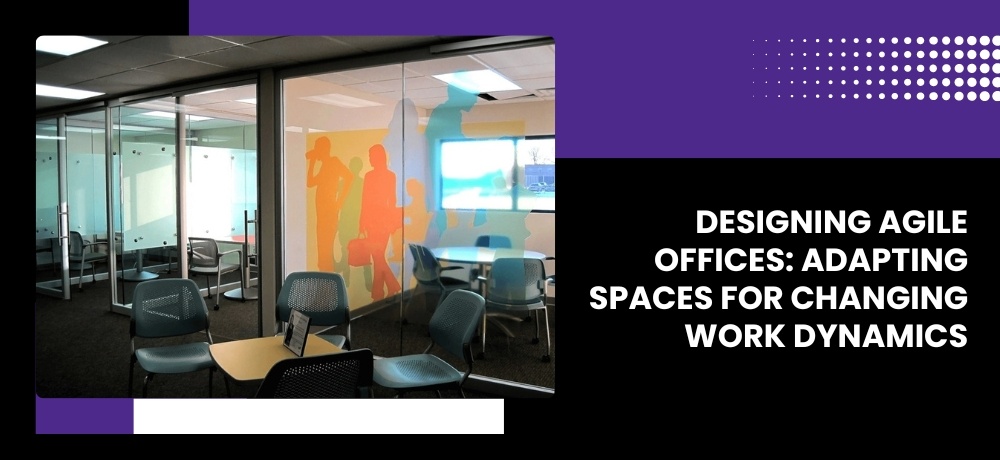Designing Agile Offices: Adapting Spaces for Changing Work Dynamics

The modern workplace is experiencing a paradigm shift, driven by evolving work dynamics and the need for flexibility. As businesses embrace remote work, hybrid models, and collaborative approaches, traditional office designs are being reimagined to accommodate these changing trends. Agile office design is emerging as a solution that empowers organizations to create dynamic and adaptable spaces that support diverse work styles and foster innovation. In this blog post, we will explore the concept of designing agile offices and how businesses can create spaces that seamlessly adapt to the evolving needs of their workforce.
1.) Embracing Agility in Office Design:
Agile office design is rooted in the principle of flexibility. It involves creating a workspace that can quickly and efficiently respond to changing demands and work styles. An agile office is not a static environment but rather a dynamic ecosystem that can be easily reconfigured, repurposed, and customized to meet the needs of different teams and projects.
2.) Multi-Functional Spaces:
Agile offices prioritize the creation of multi-functional spaces that serve various purposes. Instead of rigidly defined areas, consider designing spaces that can transform from individual workstations to collaborative hubs or meeting rooms. Multi-functional furniture, movable partitions, and modular elements allow for quick adaptations, optimizing space utilization.
3.) Flexible Furniture Arrangements:
Traditional cubicles and fixed seating arrangements are giving way to flexible furniture layouts. Agile offices incorporate movable desks, tables, and seating options that can be rearranged based on the task at hand. This adaptability not only supports different work styles but also encourages spontaneous interactions and creative collaborations.
4.) Technology Integration:
Technology is at the heart of agility in the modern workplace. Incorporate advanced AV systems, interactive displays, and wireless connectivity to enable seamless communication and collaboration among in-person and remote team members. Video conferencing equipment and virtual whiteboards facilitate effective virtual meetings and brainstorming sessions.
5.) Activity-Based Zones:
Agile office design recognizes that different tasks require different environments. Create activity-based zones such as quiet zones for focused work, collaborative areas for group discussions, and relaxation zones for unwinding. Each zone should be equipped with the necessary tools and furniture to support its intended purpose.
6.) Adapting to Hybrid Work Models:
As hybrid work models become more prevalent, agile offices are well-suited to accommodate employees who split their time between remote and in-office work. Design spaces that facilitate a seamless transition between virtual and physical interactions, ensuring that both remote and in-person team members have equal access to resources and engagement opportunities.
7.) Employee Empowerment:
Agile office design empowers employees to take ownership of their workspace. Provide employees with the autonomy to personalize their areas, rearrange furniture, and create an environment that aligns with their work preferences. When employees feel a sense of ownership, they are more likely to be engaged and productive.
8.) Sustainability and Well-being:
Agile office design can also integrate sustainable and well-being features. Consider incorporating biophilic elements, ergonomic furniture, and ample natural light to create a healthier and more inspiring workspace. Sustainability-focused materials and energy-efficient systems contribute to a more eco-friendly and cost-effective environment.
Designing agile offices is a strategic approach that enables businesses to thrive in the face of changing work dynamics. By prioritizing flexibility, multi-functionality, technology integration, and employee empowerment, organizations can create workspaces that foster innovation, collaboration, and well-being. The agile office concept recognizes that the only constant in the modern workplace is change itself, and by embracing this change, businesses can position themselves for long-term success in a rapidly evolving world.